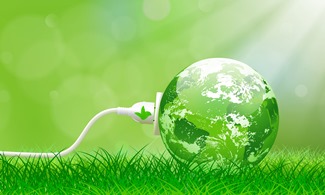Biological Hydrogen and Energy Production from Sewage

There are many methodologies, nowadays, to treat polluted wastewaters so that they can be poured to seas or rivers without compromising the environment. However, these technologies result in high energy requirements, mainly due to aeration and pumping, and a high economical cost for the treatment of the generated waste, mainly sewage sludge. Moreover, wastewater contains a large amount of chemical energy in the form of organic contaminants. The objective of this research is to recover the energy contained in the wastewater, as hydrogen, the energy vector of the future. Thus, this is a “two birds, one stone” aim as it efficiently removes organic matter from wastewater and, not only reduces the energy demand, but energy can be obtained from this waste.
The starring actors of this project are exoelectrogenic bacteria, a particular group of bacteria able to transfer the electrons outside the cell in parallel to organic matter degradation. If these electrons are transferred to an external solid electrode, we can create a flow of electrons and thus a “microbial battery”. The anodic side of this bioelectrochemical system will comprise the organic matter oxidation. Then, the electrons will flow to the cathode, where a reduction process should be promoted. If protons, from organic matter degradation, are reduced on the cathode with the electrons obtained on the anode, we produce hydrogen from wastewater. The process is not thermodynamically spontaneous and some energy input, as voltage (much lower than that needed for water electrolysis), is needed for the process to occur. In any case, the energetic balance of the process is positive since the energy contained in the produced hydrogen is much higher than that required to run the process. These devices are known as microbial electrolysis cells (MEC). Bioelectrochemical hydrogen production is still a young technology and, despite the results at lab-scale are promising and envisage a successful future, research is still needed in order to bridge the gap between laboratory and full-scale application.
The research group on Bioelectrochemistry from the Department of Chemical Engineering in UAB has been conducting research for the last 5 years on improving MEC configuration and operation to increase their energetic efficiency and to accelerate their implementation at full-scale. The laboratory results demonstrate that these systems would have a market niche at industrial scale, but there are still many technical hurdles to be addressed before moving at higher scale. Among them, the use of real wastewaters, rather than biodegradable synthetic waters, is a key research question. In this sense, two of the recent publications framed in the thesis of Dr Nuria Montpart have focused on biological hydrogen production from wastewater with complex substrates such as methanol, dairy waste, starch and glycerol. The aim of this work has been to recover as much as possible of the energy contained in waste in the form of hydrogen. For this aim, we selected a microbial consortium able to transform these complex substrates into simpler compounds that could be, in turn, degraded by exoelectrogens.
The experimental results have been very positive and high hydrogen production has been obtained linked to wastewater degradation. Among the different wastewaters, the MEC fed with dairy wastewater, gave the best results in terms of current intensity (150 amps per cubic meter of reactor), hydrogen production (0.94 cubic meters of hydrogen per cubic meter of reactor and day) and recovery of electrons at the cathode (91%), with an applied voltage of only 0.8 V. These results are the basis for a potential industrial development of this technology and, therefore, for the scaling-up of bioelectrochemical systems able to produce hydrogen from wastewater treatment.
Top left figure by iStockphoto/CarpathianPrince.
Grup de Tractament Biològic d'Efluents Líquids i Gasosos. Eliminació de Nutrients, Olors i Compostos Orgànics Volàtils (GENOCOV)
References
Montpart, N.; Rago, L.; Baeza, J.A.; Guisasola, A. Hydrogen production in single chamber microbial electrolysis cells with different complex substrates. Water Research. 2015, vol. 68, p. 601-615. doi: 10.1016/j.watres.2014.10.026.
Montpart, N.; Ribot-Llobet, E.; Garlapati, V.K.; Rago, L.; Baeza, J.A.; Guisasola, A. Methanol opportunities for electricity and hydrogen production in bioelectrochemical systems. International Journal of Hydrogen Energy. 2014, vol. 39, num. 2, p. 770-777. doi: 10.1016/j.ijhydene.2013.10.151.


